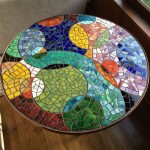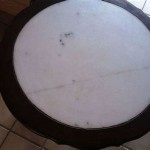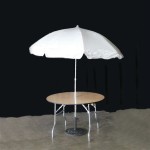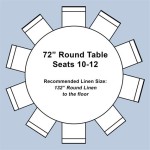Plans For Bar Billiards Table: A Comprehensive Guide
Bar billiards is a captivating pub game that combines elements of billiards and skittles, providing a unique and engaging experience. The game’s distinctive table design and scoring system set it apart from other cue sports. For enthusiasts seeking a rewarding project, building a bar billiards table offers an opportunity to personalize the gaming experience and enjoy a handcrafted piece of equipment. This article provides a comprehensive overview of the plans, considerations, and steps involved in constructing a bar billiards table.
Creating a bar billiards table, while complex, is attainable with careful planning and execution. The process involves understanding the table's dimensions, the materials required for construction, and the intricacies of the playing surface and scoring mechanisms. Having a well-defined plan is paramount to ensuring a successful build, resulting in a fully functional and enjoyable bar billiards table.
Essential Dimensions and Layout
The official dimensions of a bar billiards table, as governed by standardized rules, should be considered as the baseline for any construction project. Deviation from these dimensions may affect the game's playability and make it non-compliant with official regulations. A standard bar billiards table measures approximately 4 feet wide and 7 feet long. This overall dimension provides the space needed for the playing surface and the necessary surrounding area for players to maneuver comfortably. Within these overall dimensions, the playing surface itself is the most important aspect of the table.
The playing surface, often referred to as the "bed," should be precisely leveled. Its dimensions establish the space where the game unfolds. The central area of the table is critical for the placement of the nine skittles (also known as pins) and the positioning of the mushrooms, which act as obstacles. The placement of these elements is crucial to ensuring fair play and adherence to the game's rules. Detailed plans should clearly indicate the exact locations of these features, ensuring they are accurately positioned during the construction process.
The pocket layout is another crucial dimension to consider. Bar billiards tables feature multiple pockets, each strategically placed to receive the balls during gameplay. The size and location of these pockets influence the difficulty of the game and contribute to its strategic depth. Plans should specify the exact dimensions and positioning of the pockets, ensuring they are accurately cut and integrated into the table's surface.
Material Selection and Construction Techniques
The selection of materials is pivotal to the durability, stability, and playing characteristics of a bar billiards table. Hardwood, such as maple or oak, is typically favored for the frame and legs due to its strength and resistance to warping. The playing surface, or bed, is traditionally constructed from slate, which provides a smooth, level, and non-warping foundation. Slate thickness is important, with thicker slate providing greater stability and resistance to movement over time. Alternatives to slate, such as high-density fiberboard (HDF), can be considered for budget purposes, but may not offer the same level of performance or longevity.
Construction techniques play a vital role in the table's structural integrity. The frame should be robustly constructed, using mortise-and-tenon joints or other strong joinery methods to ensure long-lasting stability. The legs should be carefully attached to the frame, providing a solid and level base for the table. During assembly, it is crucial to use appropriate adhesives and fasteners to create secure and long-lasting bonds between the different components. Proper clamping and alignment are essential to prevent warping or misalignment during the construction process.
The covering of the playing surface is another crucial aspect. Wool cloth, typically green or blue, is typically used to cover the playing surface. The cloth's quality affects the ball's roll and the overall playing experience. The cloth should be stretched tightly and securely attached to the slate or chosen substrate, ensuring a smooth, wrinkle-free surface. Adhesive and staples are commonly used to secure the cloth, with careful attention paid to achieving a uniform tension across the entire playing area.
Scoring Mechanisms and Unique Features
The scoring mechanism is a defining feature of bar billiards tables. Unlike traditional billiards, bar billiards utilizes a timed gameplay element. A coin-operated mechanism activates the playing time, typically lasting a set number of minutes. Plans must incorporate this timing mechanism, allowing for the activation and control of the playing time. This aspect often involves electrical components and wiring, requiring careful attention to safety and functionality. The scoring mechanism also allows for automatic ball return, adding to the convenience of the game.
The skittles, or pins, are another defining characteristic of bar billiards. These small, cylindrical pins are strategically placed on the playing surface and are subject to being knocked down by the balls. The plans should provide precise measurements and specifications for the skittles, ensuring they meet standard dimensions and are made of appropriate materials, such as hardwood or plastic. Their precise placement on the table is important for the integrity of the game. The mushrooms, which are fixed obstacles on the playing surface, also require precise measurements and secure attachment to the table.
Lighting is a critical factor in bar billiards and should be considered in the table design. Adequate lighting is essential for visibility and accurate aiming. Plans can include the integration of overhead lighting fixtures, strategically positioned to illuminate the playing surface evenly. The lighting should be bright enough to ensure clear visibility without causing glare or shadows. The lighting fixture should be securely attached to the table or suspended above it, providing a stable and reliable source of illumination.
Beyond these core features, customization options exist when building a bar billiards table. These options can include personalized finishes, such as staining or painting the frame and legs to match a particular aesthetic. Decorative elements, such as trim or molding, can be added to enhance the table's appearance. The coin mechanism can be customized to accept different currencies or tokens, depending on the intended use. These personalized touches can transform a standard bar billiards table into a unique and visually appealing addition to any game room or pub.
Developing comprehensive and detailed plans for a bar billiards table project is essential. These plans should include thorough diagrams, precise measurements, and clear instructions for each stage of the construction process. Consideration should be given to material selection, joinery techniques, and the integration of the scoring mechanisms and unique features. Following a well-defined plan will increase the likelihood of a successful build, resulting in a functional and enjoyable bar billiards table that provides years of entertainment.

A Small Rex Or Bar Billiards Game Without Balls 4 Steps With S Instructables

Pin By Ariel Barrantes Segura On Detalles De Madera Pool Table Diy Woodworking

Homemade Pool Table Plans If You Have Some Basic Woodworking Skills But She Even Has Time To Build Plan Bar Billiards Billiard

Billiard And Snooker Heritage Collection Bar Billiards Ltd

Bar Billiard Tables Table Experts Hubble Sports Since 1910

Bar Billiard Tables Table Experts Hubble Sports Since 1910

Sams Bar Billiards Table The Room Company

48 Bar Billiards Table Diy Ideas Pool

Antique Bar Billiard Table And New Billiards Spares Mushrooms Skittles Balls Etc From

Sams Bar Billiards Table The Room Company
Related Posts








